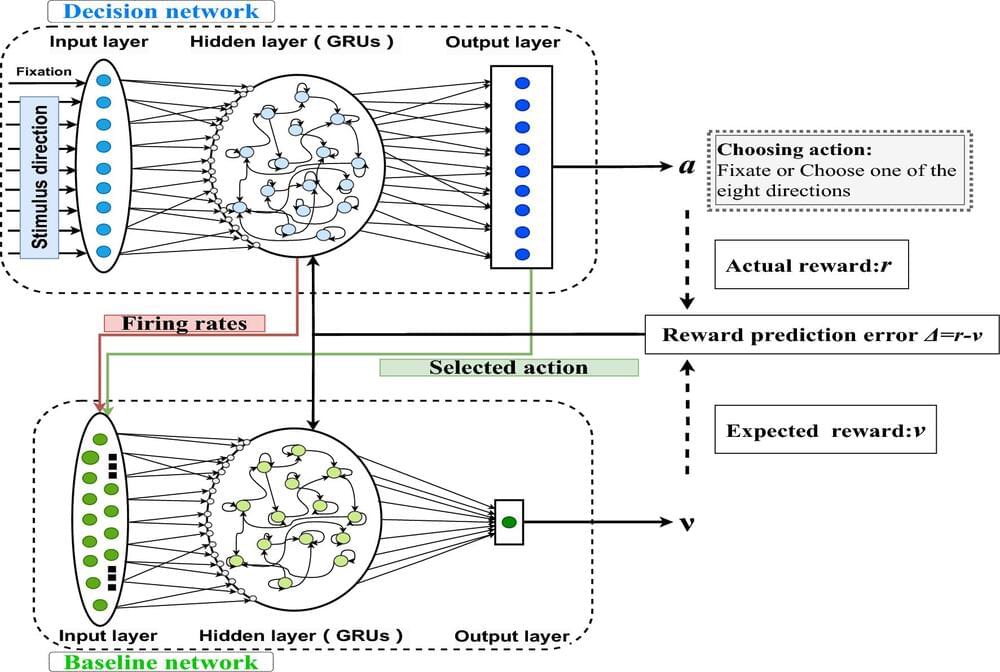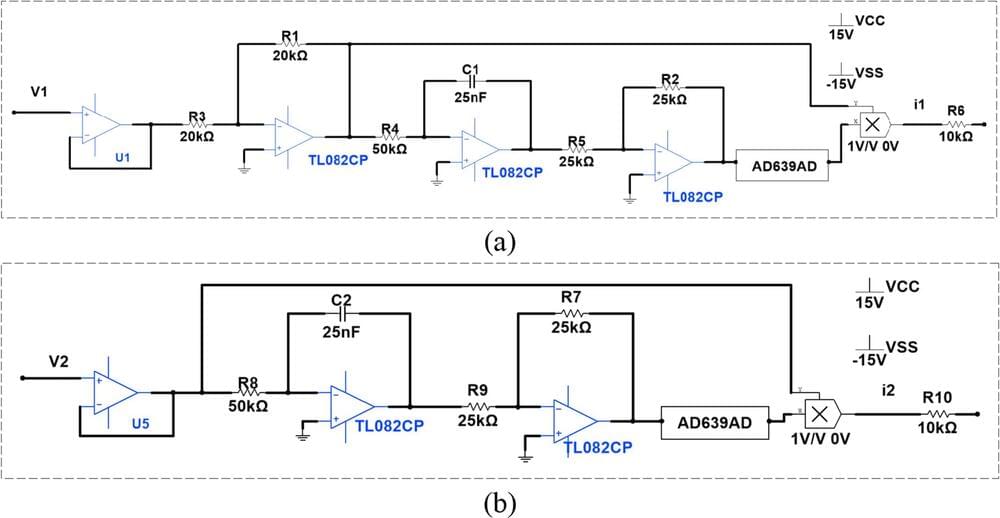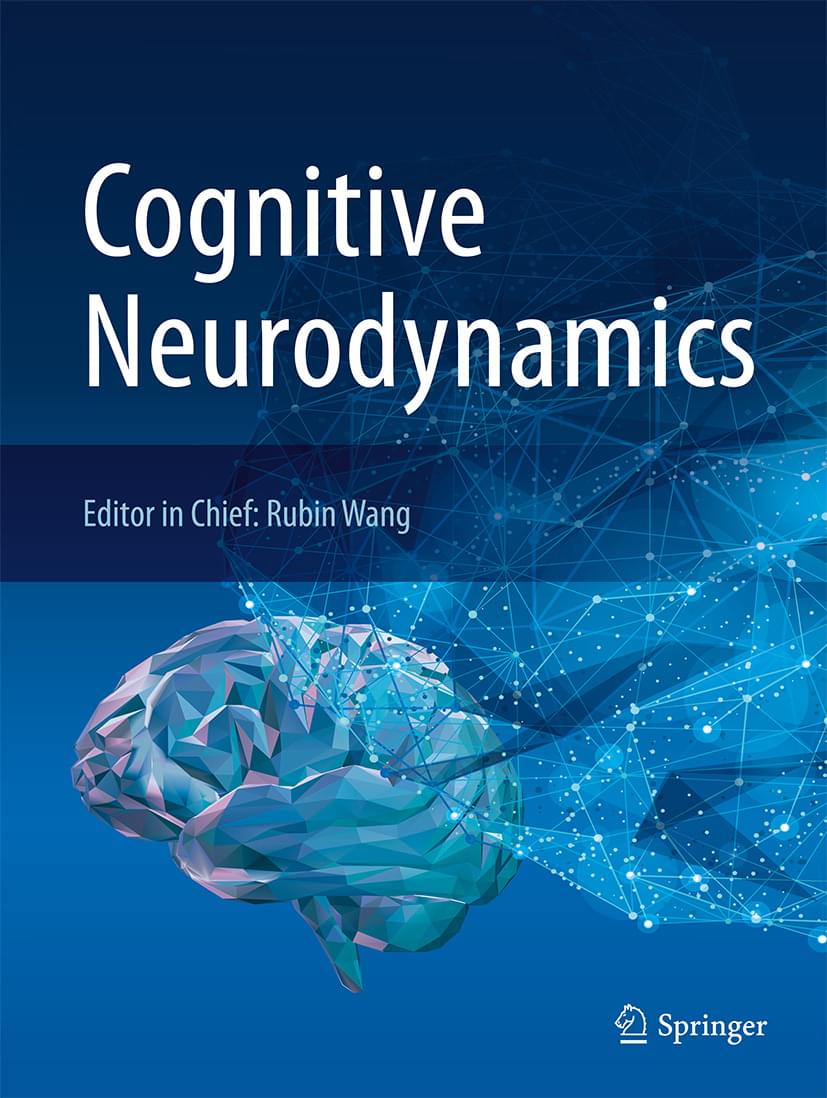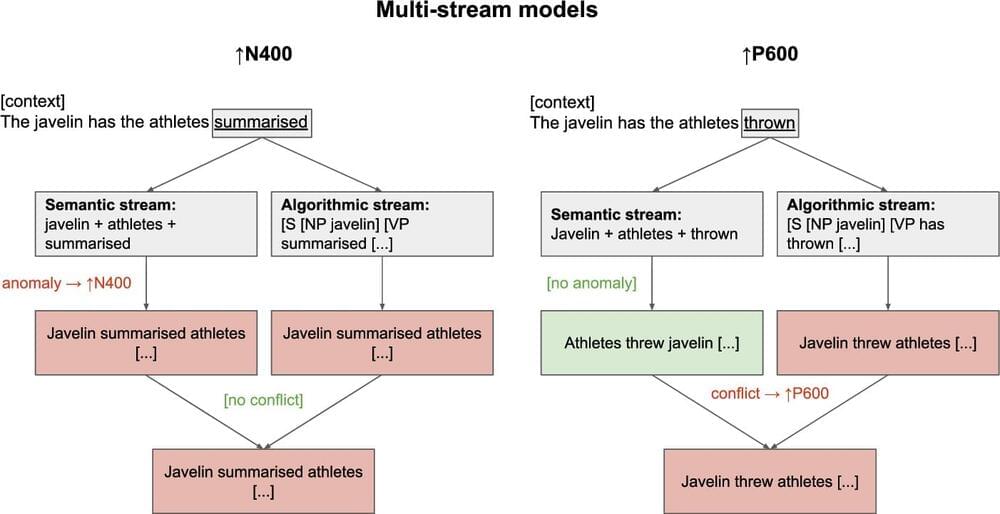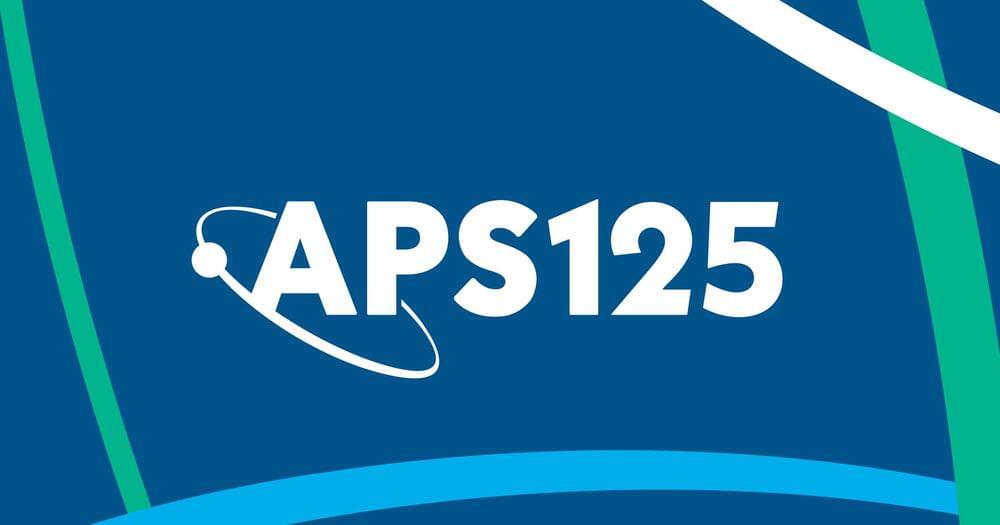Jun 26, 2024
A working memory model based on recurrent neural networks using reinforcement learning
Posted by Dan Breeden in category: robotics/AI
Numerous electrophysiological experiments have reported that the prefrontal cortex (PFC) is involved in the process of working memory. PFC neurons continue firing to maintain stimulus information in the delay period without external stimuli in working memory tasks. Further findings indicate that while the activity of single neurons exhibits strong temporal and spatial dynamics (heterogeneity), the activity of population neurons can encode spatiotemporal information of stimuli stably and reliably. From the perspective of neural networks, the computational mechanism underlying this phenomenon is not well demonstrated. The main purpose of this paper is to adopt a new strategy to explore the neural computation mechanism of working memory. We used reinforcement learning to train a recurrent neural network model to learn a spatial working memory task.
